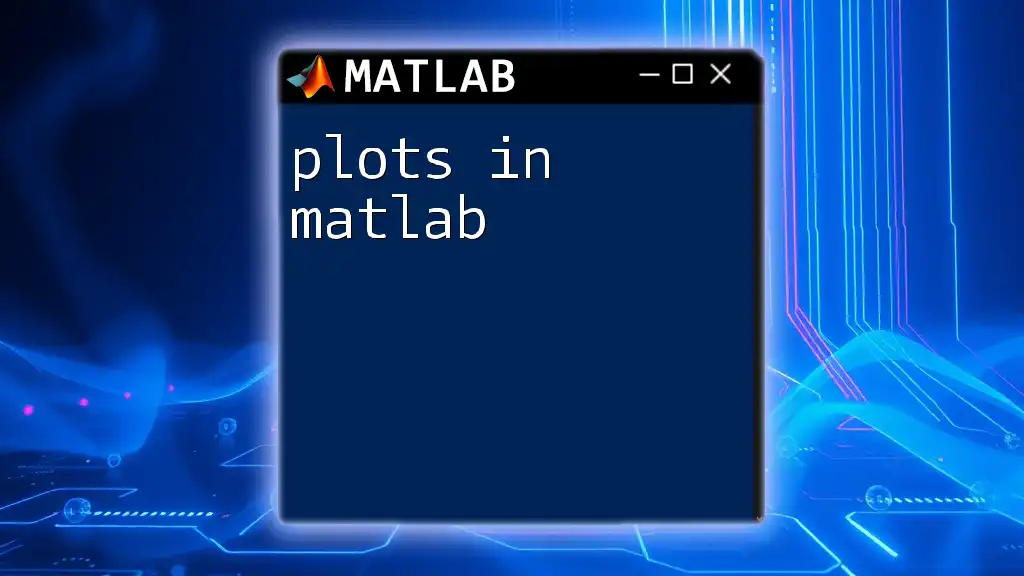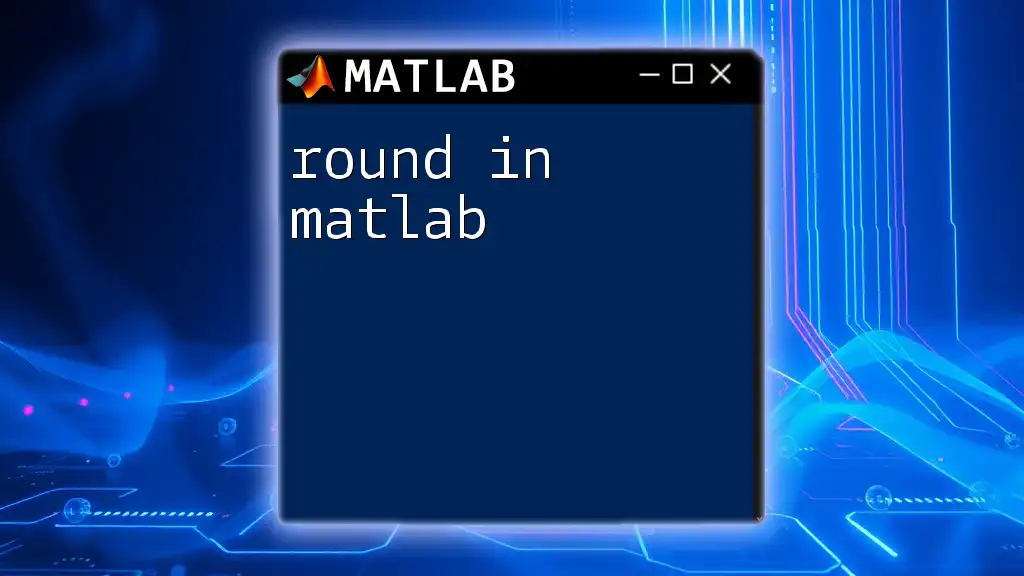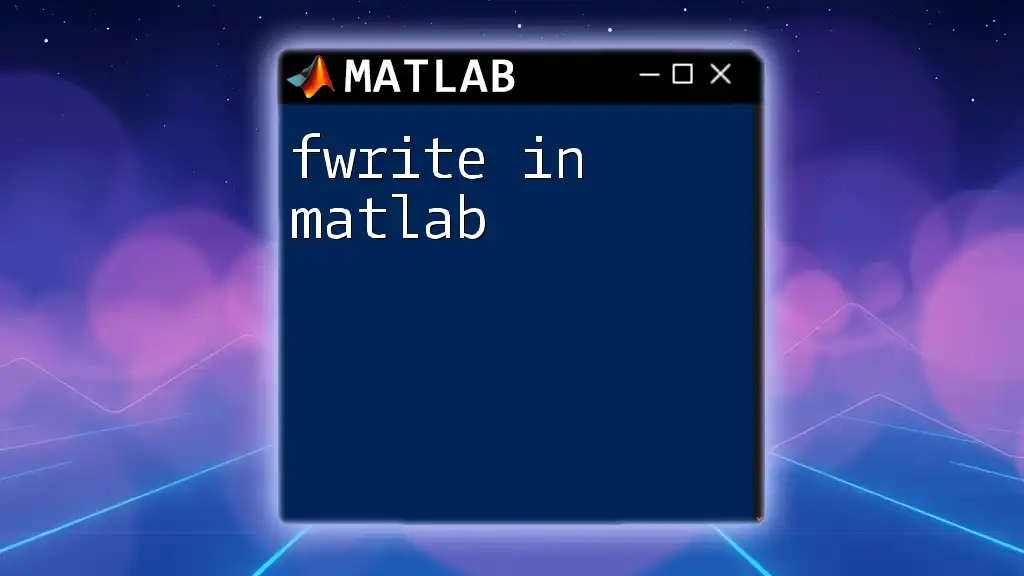In MATLAB, the `roots` function is used to find the roots of a polynomial represented by its coefficients in a vector.
Here’s an example of how to use the `roots` function:
p = [1 -3 2]; % Coefficients for the polynomial x^2 - 3x + 2
r = roots(p); % Calculate the roots of the polynomial
disp(r); % Display the roots
Understanding Roots in Mathematics
What are Roots?
Roots are fundamental concepts in mathematics; they represent the values for which a given function equals zero. In simpler terms, if you have a function \( f(x) \), the root is the value of \( x \) where \( f(x) = 0 \). Roots arise in various applications, including solving equations, optimizing functions, and modeling real-world phenomena.
Types of Roots
-
Real Roots vs. Complex Roots: Roots can be classified based on their nature. Real roots are those that can be expressed as real numbers, while complex roots involve imaginary numbers. For example, the polynomial equation \( x^2 + 1 = 0 \) has no real roots, but its solutions (roots) are complex: \( x = i \) and \( x = -i \).
-
Multiple Roots: A root is labeled as "multiple" when it occurs more than once in a polynomial. For instance, the polynomial \( (x-1)^2 \) has a double root at \( x = 1 \), which means that the root \( 1 \) is counted twice.

MATLAB Basics for Finding Roots
Why Use MATLAB for Finding Roots?
MATLAB is an incredibly powerful tool for evaluating and solving mathematical problems, including finding roots. It brings efficiency and robustness, providing built-in functions specifically designed for root-finding problems, facilitating quicker analysis compared to other computational methods.
Writing MATLAB Scripts
Getting started with MATLAB scripting can be straightforward. MATLAB operates with a simple syntax characterized by:
- Commands: Direct instructions issued to the MATLAB environment.
- Scripts: Collections of commands written in the MATLAB editor, designed to run as a whole.

Finding Roots of Polynomials
Using the `roots` Function
The `roots` function is one of MATLAB's most valuable tools for finding roots of polynomial expressions.
Explanation: The `roots` function takes the coefficients of a polynomial as input and returns its roots. The input must be given in a vector format.
Example: To find the roots of the polynomial \( x^3 - 6x^2 + 11x - 6 \):
% Finding roots of a polynomial
coeff = [1, -6, 11, -6]; % Polynomial coefficients for x^3 - 6x^2 + 11x - 6
r = roots(coeff);
disp('Roots of the polynomial are:');
disp(r);
The output will display the roots found, which can be real or complex.
Visualizing Roots
Visualization aids in understanding where the roots lie on the graph of a polynomial.
Example: Using `fplot`, we can visualize the polynomial and mark its roots.
% Plotting the polynomial function
f = @(x) x.^3 - 6*x.^2 + 11*x - 6;
fplot(f, [-1, 7]);
hold on;
plot(r, zeros(size(r)), 'ro'); % Marking the roots
title('Polynomial and its Roots');
xlabel('x');
ylabel('f(x)');
grid on;
hold off;
In this example, we define the polynomial function and plot it within a specified range. The roots are marked in red, helping to identify their locations graphically.

Finding Roots of Non-Polynomial Functions
Using `fzero`
When dealing with non-polynomial functions, the `fzero` function becomes essential.
Explanation: `fzero` finds the root of a function given an initial guess. It is especially useful when working with functions that are not expressed as polynomials.
Example: To find the root of the function \( \sin(x) - \frac{x}{2} = 0 \):
% Finding root of a non-polynomial function
f = @(x) sin(x) - x/2; % Example function
root = fzero(f, 1); % Initial guess of 1
disp('Root of the function is:');
disp(root);
The output will present the root found based on the initial guess provided.
Visualizing Non-Polynomial Roots
Visualization can also be utilized for non-polynomial roots, enhancing understanding of where the function intersects the x-axis.

Advanced Root-Finding Techniques
Multiple Roots Identification
Identifying and verifying multiple roots requires specific techniques, particularly for polynomials. One method is to use the `polyval` function to evaluate the polynomial at its found roots.
When you evaluate the polynomial at its root using `polyval`, multiple roots will result in \( f(x) = 0 \) at those points.
Using `vpasolve` for Numerical Solutions
For certain equations, especially those involving symbolic variables, the `vpasolve` function can be highly beneficial.
Example: To find the numerical root of the polynomial equation \( x^3 - 6x^2 + 11x - 6 = 0 \):
syms x;
eq = x^3 - 6*x^2 + 11*x - 6 == 0;
roots = vpasolve(eq, x);
disp('Numerical roots using vpasolve:');
disp(roots);
This method is particularly useful for equations that are difficult to solve analytically.

Common Errors and Troubleshooting
Handling Complex Roots
When working with complex roots, one must understand how MATLAB outputs results. Complex roots will be expressed in the form \( a + bi \), where \( i \) is the imaginary unit. Ensure that you are aware of how to interpret these results and their significance in your context.
Debugging Tips
Common errors often stem from incorrect function definitions or initial guesses. Here are a few tips:
- Confirm that the function being analyzed is correctly defined.
- If a function is oscillatory, the choice of initial guess in `fzero` can significantly affect results.
- Evaluate the exit flags provided by functions, as they often give insight into whether a root was successfully found.

Conclusion
Finding roots in MATLAB opens a world of possibilities for mathematical modeling, problem-solving, and data analysis. Whether you're dealing with polynomials or more complex functions, MATLAB offers an array of tools designed to simplify this process. Mastering these techniques not only enhances your computational skills but also allows you to tackle a variety of real-world applications with confidence. With consistent practice and exploration, you can effectively leverage MATLAB's capabilities in your mathematical journey.

















